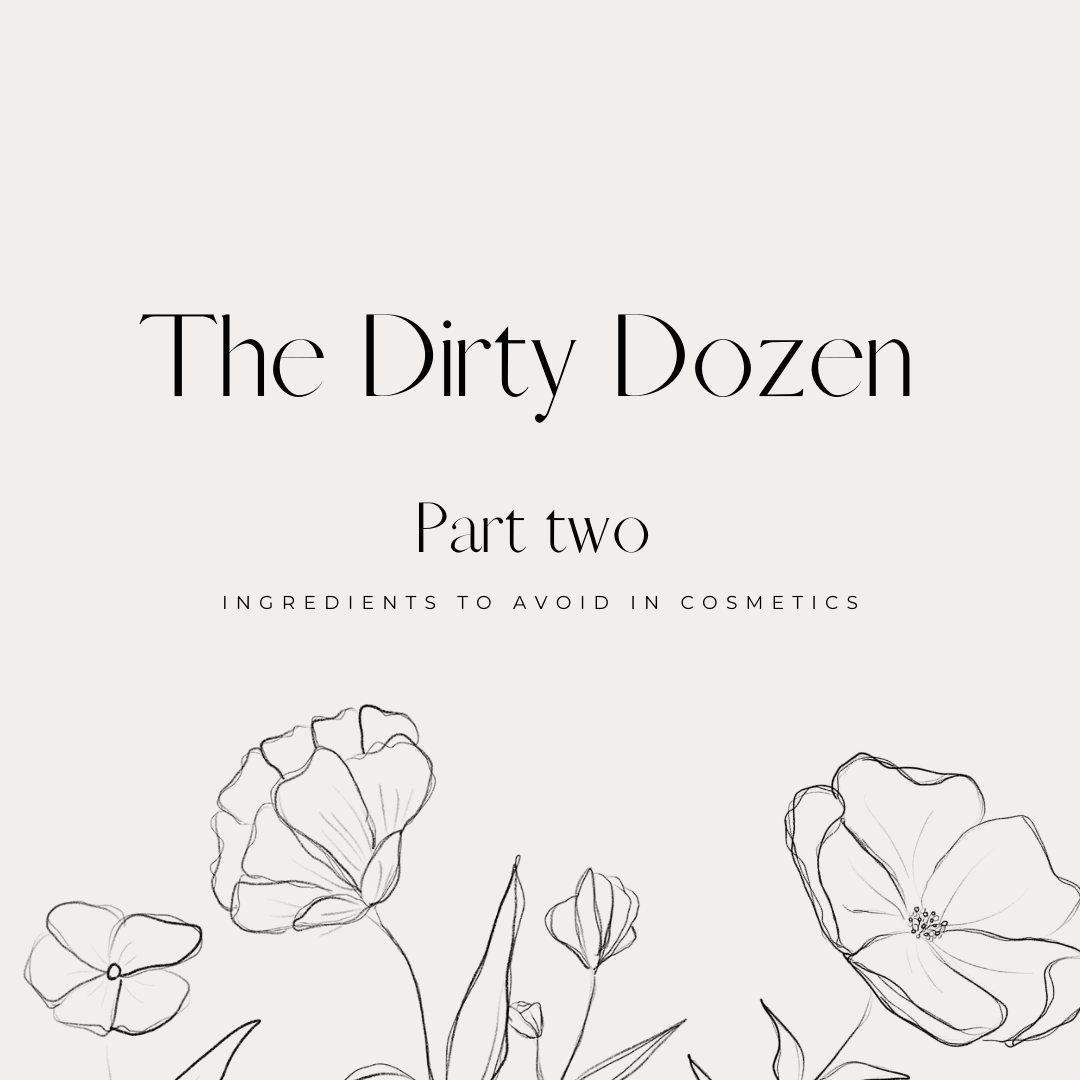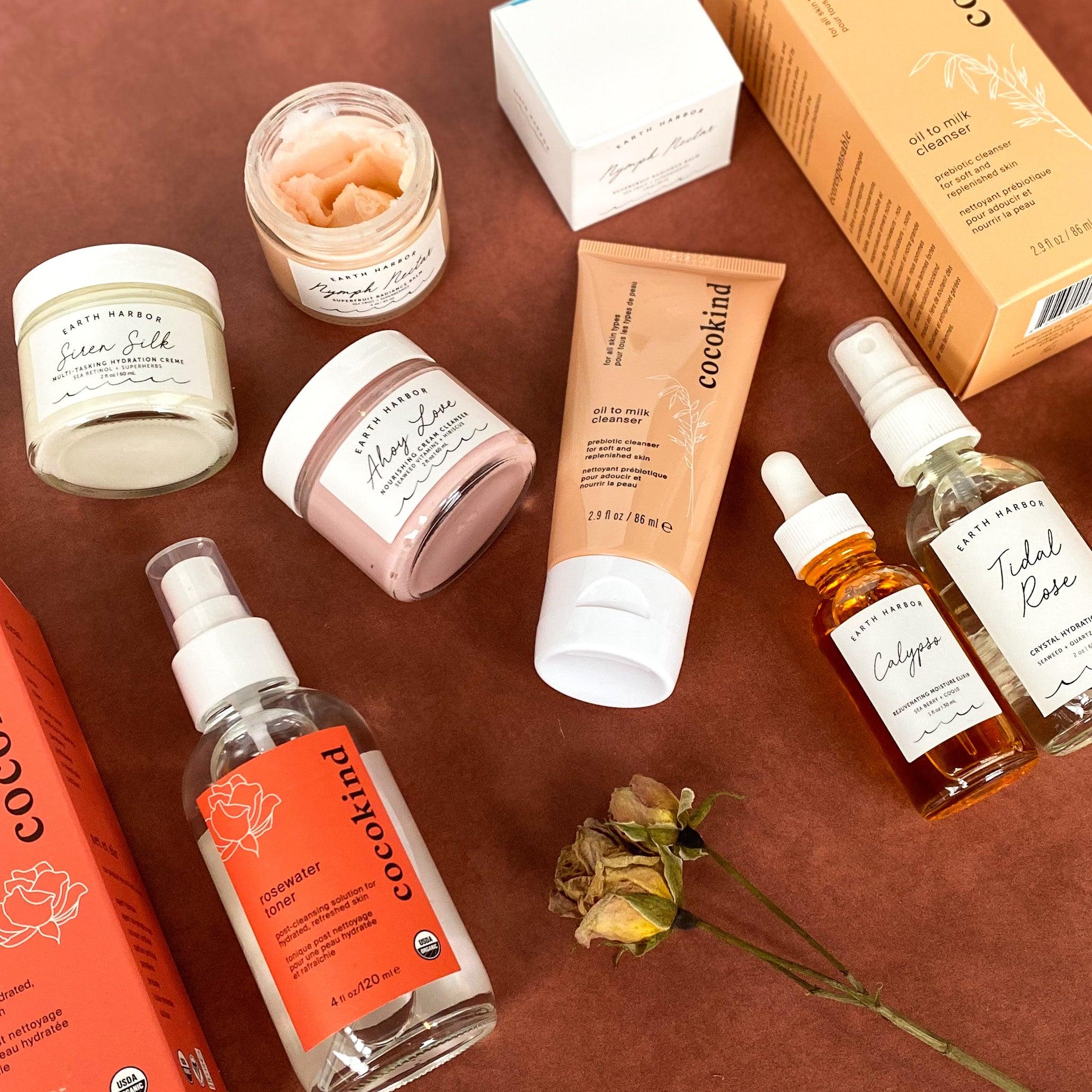The Dirty Dozen | Ingredients to Avoid in Cosmetics PART 2

Here we go, part two of the Dirty Dozen, ingredients to avoid in cosmetics. If you read the first post you know why I broke it down into two! This is not an easy read but you guys, its worth it!
After writing the first blog post it took me a minute to write the second because I was called a fear monger, but guess what, I'm not! I am someone who believes I have experienced these effects first hand, I am a mom who believes that one of my roles is to protect my daughters and their bodies because you don't get a second chance when it comes to things like your reproductive health. I am simply bringing you widely known information. These are ingredients that are well labeled and studied in the EU and Canada but that the US and the FDA continue to put on the back burner and label as "possible" instead of "known". I will say it over and over again, If there is a chance I can protect my children from the pain I went through then yes, I will do it! This is one of the ways I know how- removing these ingredients from my home is the best decision I have made. No, it's not easy to ditch and switch everything at once, but that is why I am here. I want to walk you through this journey and help you find the best products for you AND your family.
The Dirty Dozen, to 90% of people, is boring. I am in that 90%, I don't like big words that I can't read... plain and simple. But I felt that this was a good base point, somewhere to refer back to in future blog posts. I wanted to "get it out of the way" so here it is, part two of the Dirty Dozen list.
Formaldehyde-releasing preservatives: Used as a preservative and covers serval chemicals and ingredients under the following labels: DMDM hydantoin, diazolidinyl urea, imidazolidinyl urea, methenamine, quaternium-15, and sodium hydroxymethylglycinate. These are preservatives used to prolong the shelf life of products and work by continuously releasing formaldehyde, which is a known carcinogen. Most range from a 5-10 on the EWG scale.
PEG Compounds: Peg Compounds are petroleum based compounds used as thickeners, solvents and moisturizers and are typically found in moisturizers and cream based cosmetics. depending on how the Peg Compounds have been processed they can contain levels of ethylene oxide and 1,4-dioxide. Ethylene dioxide is a known human carcinogen, and is known to effect the nervous system and is classified as a developmental toxin. 1,4-dioxide is a possible human carcinogen.
These can be easily removed however is it impossible to know if a product has taken the steps to undergo this process. Studies have shown that in organic or naturally labeled products that contain Peg Compounds 46 out of 100 contained 1,4-dioxide. Just because it's labeled natural or organic doesn't mean anything.
Petrolatum: Petroleum is a mineral jelly (i.e. petroleum jelly), in cosmetics it is used to lock moisture into the skin or make your hair shine. When used in cosmetics petroleum is commonly paired with an ingredient commonly known as, PAHs (polycyclic aromatic hydrocarbons), studies show that prolonged contact with PAHs can be associated with cancers. The European Union has classified petrolatum as a carcinogen. When refined properly and when the processes are fully documented, petroleum in products can be completely safe. As a consumer it is just hard to know when that is.
Siloxanes: These are silicon-based compounds that are used to soften and moisten, they are commonly found in products designed to make hair dry quicker and deodorants to help them glide smoother. These can be commonly labeled as D4 and D5. The EU classifies D4 as a known endocrine disruptor, a possible reproductive toxin and something that may interfere with reproduction itself. In high doses (or a little over a long time) D5 has shown its possible to cause uterine tumors, harm the reproductive system, immune system, and the nervous system as well.
As most of these chemicals in the United States are not regulated, we look to Canada and the EU where they have stricter guidelines.
Sodium Laurel Sulfate: Also known as SLS or SLES, is used in cosmetics as a detergent, it causes things to sud. It is most commonly found in shampoos, body washes, soaps, cleansers and house hold cleaning products.
SLS can contain ethylene oxide and 1,4-dioxane. The International Agency for Cancer research has ethylene oxide listed as a known carcinogen, and it may effect the nervous system. The California Environmental Protection Agency has classified Ethylene oxide as a potential developmental toxin, and 1,4-dioxane as a possible human carcinogen, and it is persistent, which means that it does not decompose easily and can then become an environmental hazard.
As in a lot of these ingredients/chemicals it depends on the process when they are made, however there are no regulations stating they need to be made in a safe and healthy way.
Triclosan: Triclosan is commonly found in deodorants, antiperspirants, cleansers hand sanitizers, laundry detergents and products labeled as "anti-bacterial". Triclosan can pass through the skin and can cause hormone disruption. It is also persistent, again, meaning it does not decompose and can build up in the environment being toxic to animals; primarily aquatic life.
There they are, the well known Dirty Dozen List. This is not something I have compiled, this is a list that has been complied over years of studies and research, I am essentially bringing it to you in a paraphrased format. If you would like to dig in deeper, I highly recommend starting with looking up these ingredients on the EWG Skin Deep website, as well as the David Suzuki Foundation as a starting point.




Comments